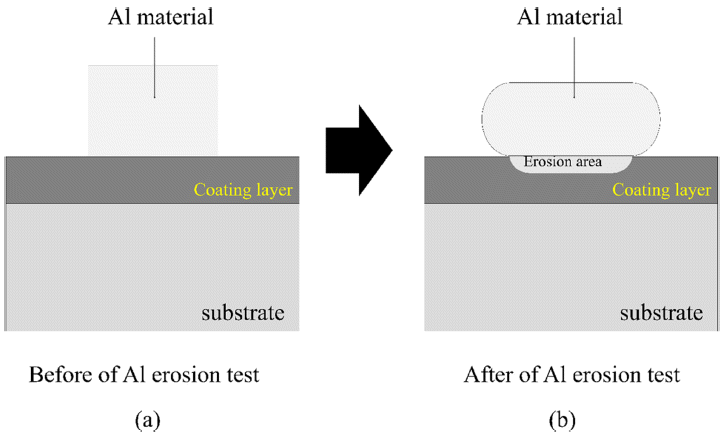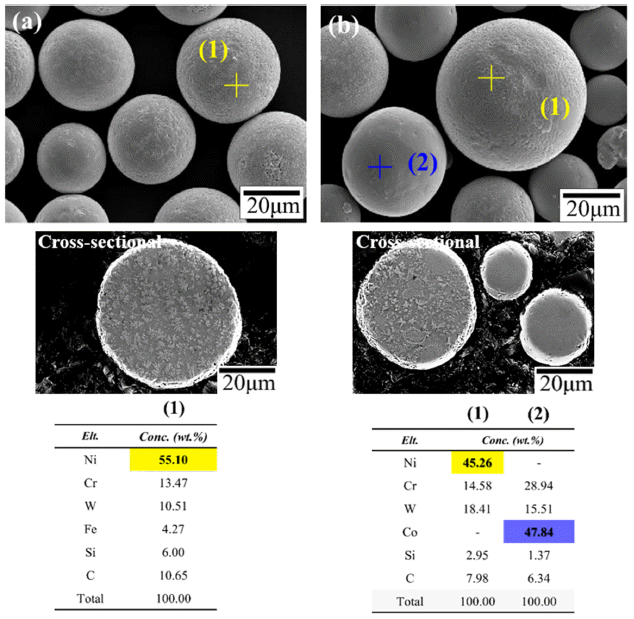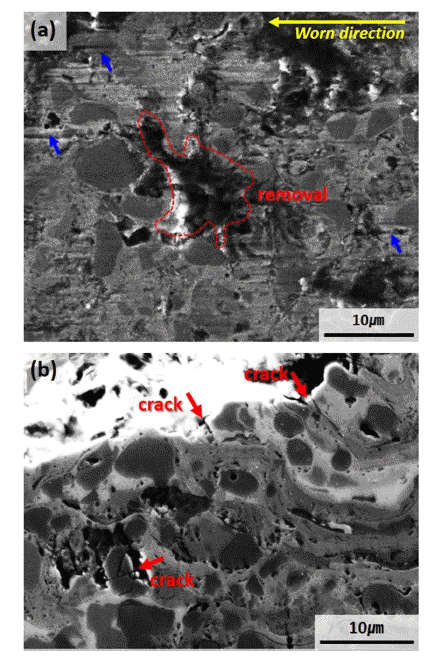Search
- Page Path
- HOME > Search
- [Korean]
- Effect of Stress Relieving Heat Treatment on Tensile and Impact Toughness Properties of AISI 316L Alloy Manufactured by Selective Laser Melting Process
- Dong-Hoon Yang, Gi-Su Ham, Sun-Hong Park, Kee-Ahn Lee
- J Korean Powder Metall Inst. 2021;28(4):301-309. Published online August 1, 2021
- DOI: https://doi.org/10.4150/KPMI.2021.28.4.301

- 546 View
- 4 Download
-
 Abstract
Abstract
 PDF
PDF In this study, an AISI 316 L alloy was manufactured using a selective laser melting (SLM) process. The tensile and impact toughness properties of the SLM AISI 316 L alloy were examined. In addition, stress relieving heat treatment (650°C / 2 h) was performed on the as-built SLM alloy to investigate the effects of heat treatment on the mechanical properties. In the as-built SLM AISI 316 L alloy, cellular dendrite and molten pool structures were observed. Although the molten pool did not disappear following heat treatment, EBSD KAM analytical results confirmed that the fractions of the low- and high-angle boundaries decreased and increased, respectively. As the heat treatment was performed, the yield strength decreased, but the tensile strength and elongation increased only slightly. Impact toughness results revealed that the impact energy increased by 33.5% when heat treatment was applied. The deformation behavior of the SLM AISI 316 L alloy was also examined in relation to the microstructure through analyses of the tensile and impact fracture surfaces.
- [Korean]
- Microstructure and Liquid Al Erosion Property of Tribaloy T-800 Coating Material Manufactured by Laser Cladding Process
- Kyoung-Wook Kim, Gi-Su Ham, Sun-Hong Park, Kee-Ahn Lee
- J Korean Powder Metall Inst. 2020;27(3):210-218. Published online June 1, 2020
- DOI: https://doi.org/10.4150/KPMI.2020.27.3.210

- 318 View
- 2 Download
-
 Abstract
Abstract
 PDF
PDF A T-800 (Co-Mo-Cr) coating material is fabricated using Co-Mo-Cr powder feedstock and laser cladding. The microstructure and melted Al erosion properties of the laser-cladded T-800 coating material are investigated. The Al erosion properties of the HVOF-sprayed MoB-CoCr and bulk T-800 material are also examined and compared with the laser-cladded T-800 coating material. Co and lave phases (Co2MoCr and Co3Mo2Si) are detected in both the lasercladded T-800 coating and the bulk T-800 materials. However, the sizes of the lave phases are measured as 7.9 μm and 60.6 μm for the laser-cladded and bulk T-800 materials, respectively. After the Al erosion tests, the erosion layer thicknesses of the three materials are measured as 91.50 μm (HVOF MoB-CoCr coating), 204.83 μm (laser cladded T-800), and 226.33 μm (bulk T-800). In the HVOF MoB-CoCr coating material, coarse cracks and delamination of the coating layer are observed. On the other hand, no cracks or local delamination of the coating layer are detected in the laser T-800 material even after the Al erosion test. Based on the above results, the authors discuss the appropriate material and process that could replace conventional bulk T-800 materials used as molten Al pots.
- [Korean]
- Effect of High Frequency Heat Treatment on the Microstructure and Wear Properties of Ni based Self Fluxing Composite Coating Layer Manufactured by HVOF Spray Process
- Dong-Yeol Wi, Gi-Su Ham, Sun-Hong Park, Kee-Ahn Lee
- J Korean Powder Metall Inst. 2019;26(5):421-431. Published online October 1, 2019
- DOI: https://doi.org/10.4150/KPMI.2019.26.5.421

- 412 View
- 3 Download
-
 Abstract
Abstract
 PDF
PDF In this study, the formation, microstructure, and wear properties of Colmonoy 88 (Ni-17W-15Cr-3B-4Si wt.%) + Stellite 1 (Co-32Cr-17W wt.%) coating layers fabricated by high-velocity oxygen fuel (HVOF) spraying are investigated. Colmonoy 88 and Stellite 1 powders were mixed at a ratio of 1:0 and 5:5 vol.%. HVOF sprayed selffluxing composite coating layers were fabricated using the mixed powder feedstocks. The microstructures and wear properties of the composite coating layers are controlled via a high-frequency heat treatment. The two coating layers are composed of γ-Ni, Ni3B, W2B, and Cr23C6 phases. Co peaks are detected after the addition of Stellite 1 powder. Moreover, the WCrB2 hard phase is detected in all coating layers after the high-frequency heat treatment. Porosities were changed from 0.44% (Colmonoy 88) to 3.89% (Colmonoy 88 + ST#1) as the content of Stellite 1 powder increased. And porosity is denoted as 0.3% or less by inducing high-frequency heat treatment. The wear results confirm that the wear property significantly improves after the high-frequency heat treatment, because of the presence of wellcontrolled defects in the coating layers. The wear surfaces of the coated layers are observed and a wear mechanism for the Ni-based self-fluxing composite coating layers is proposed.
- [Korean]
- Microstructural and Wear Properties of WC-based and Cr3C2-based Cermet Coating Materials Manufactured with High Velocity Oxygen Fuel Process
- Yeon-Ji Kang, Gi-Su Ham, Hyung-Jun Kim, Sang-Hoon Yoon, Kee-Ahn Lee
- J Korean Powder Metall Inst. 2018;25(5):408-414. Published online October 1, 2018
- DOI: https://doi.org/10.4150/KPMI.2018.25.5.408

- 439 View
- 1 Download
- 2 Citations
-
 Abstract
Abstract
 PDF
PDF This study investigates the microstructure and wear properties of cermet (ceramic + metal) coating materials manufactured using high velocity oxygen fuel (HVOF) process. Three types of HVOF coating layers are formed by depositing WC-12Co, WC-20Cr-7Ni, and Cr3C2-20NiCr (wt.%) powders on S45C steel substrate. The porosities of the coating layers are 1 ± 0.5% for all three specimens. Microstructural analysis confirms the formation of second carbide phases of W2C, Co6W6C, and Cr7C3 owing to decarburizing of WC phases on WC-based coating layers. In the case of WC-12Co coating, which has a high ratio of W2C phase with high brittleness, the interface property between the carbide and the metal binder slightly decreases. In the Cr3C2-20CrNi coating layer, decarburizing almost does not occur, but fine cavities exist between the splats. The wear loss occurs in the descending order of Cr3C2-20NiCr, WC-12Co, and WC-20Cr-7Ni, where WC-20Cr-7Ni achieves the highest wear resistance property. It can be inferred that the ratio of the carbide and the binding properties between carbide–binder and binder–binder in a cermet coating material manufactured with HVOF as the primary factors determine the wear properties of the cermet coating material.
-
Citations
Citations to this article as recorded by- Tribological Behavior Analysis of WC-Ni-Cr + Cr3C2 and WC-Ni-Cr + YSZ Coatings Sprayed by HVOF
Tae-Jun Park, Gye-Won Lee, Yoon-Suk Oh
journal of Korean Powder Metallurgy Institute.2023; 30(5): 415. CrossRef - Effects of different HVOF thermal sprayed cermet coatings on tensile and fatigue properties of AISI 1045 steel
Gi-Su Ham, R. Kreethi, Hyung-jun Kim, Sang-hoon Yoon, Kee-Ahn Lee
Journal of Materials Research and Technology.2021; 15: 6647. CrossRef
- Tribological Behavior Analysis of WC-Ni-Cr + Cr3C2 and WC-Ni-Cr + YSZ Coatings Sprayed by HVOF
- [Korean]
- Manufacturing of Ni-Cr-B-Si + WC/12Co Composite Coating Layer Using Laser Cladding Process and its Mechanical Properties
- Gi-Su Ham, Chul-O Kim, Soon-Hong Park, Kee-Ahn Lee
- J Korean Powder Metall Inst. 2017;24(5):370-376. Published online October 1, 2017
- DOI: https://doi.org/10.4150/KPMI.2017.24.5.370

- 306 View
- 1 Download
- 2 Citations
-
 Abstract
Abstract
 PDF
PDF In this study we manufacture a Ni-Cr-B-Si +WC/12Co composite coating layer on a Cu base material using a laser cladding (LC) process, and investigate the microstructural and mechanical properties of the LC coating and Ni electroplating layers (reference material). The initial powder used for the LC coating layer is a powder feedstock with an average particle size of 125 μm. To identify the microstructural and mechanical properties, OM, SEM, XRD, room and high temperature hardness, and wear tests are implemented. Microstructural observation of the initial powder and LC coating layer confirm the layer is composed mainly of γ-Ni phases and WC and Cr23C6 carbides. The measured hardness of the LC coating and Ni electroplating layers are 653 and 154 Hv, respectively. The hardness measurement from room up to high temperatures of 700°C result in a hardness decrease as the temperature increases, but the hardness of the LC coating layer is higher for all temperature conditions. Room temperature wear results show that the wear loss of the LC coating layer is 1/12 of the wear level of the Ni electroplating layer. The measured bond strength is also greater in the LC coating than the Ni electroplating.
-
Citations
Citations to this article as recorded by- Microstructure and Room Temperature Wear Properties of a Ni-Cr-B-Si-C Coating Layer Manufactured by the Laser Cladding Process
Tae-Hoon Kang, Kyu-Sik Kim, Soon-Hong Park, Kee-Ahn Lee
Korean Journal of Metals and Materials.2018; 56(6): 423. CrossRef - Microstructural and Wear Properties of WC-based and Cr3C2-based Cermet Coating Materials Manufactured with High Velocity Oxygen Fuel Process
Yeon-Ji Kang, Gi-Su Ham, Hyung-Jun Kim, Sang-Hoon Yoon, Kee-Ahn Lee
Journal of Korean Powder Metallurgy Institute.2018; 25(5): 408. CrossRef
- Microstructure and Room Temperature Wear Properties of a Ni-Cr-B-Si-C Coating Layer Manufactured by the Laser Cladding Process
TOP
 kpmi
kpmi


 First
First Prev
Prev


